Swiss Chard can grow in various environments. It’s also relatively low maintenance and tolerant of all-weather conditions, making it ideal for container gardens. While there are many tips on how to make your container garden successful, the key is to pick quality soil, provide enough sunlight and water, and ensure that the temperature remains steady. Depending on your container type and the climate you live in, you may want to choose a different type of Swiss Chard.
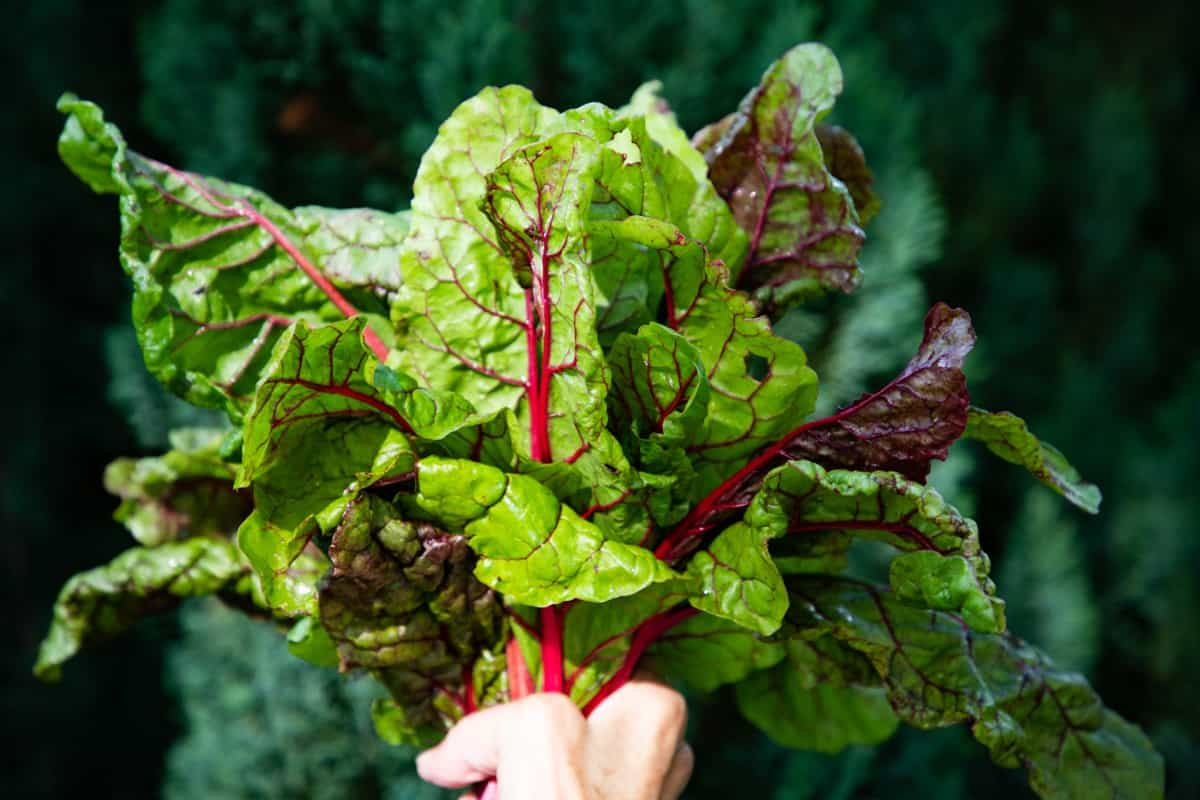
How to grow and care for Swiss Chard in containers
Types of Swiss Chard
- Barese – Barese is a type of Swiss Chard grown in containers. It has dark green leaves and white stems. The leaves are slightly bitter, while the stems are sweet.
- Fordhook Giant – The Fordhook Giant is a popular type of Swiss Chard that is often grown in containers. This variety of Swiss Chard has dark green leaves and thick white stalks. The leaves of the Fordhook Giant are slightly more bitter than other varieties of Swiss Chard, but they are still packed with nutrients. This type of Swiss Chard is a good choice for container gardening.
- Orange – The leaves are a deep green, and the stems range from yellow to orange to red. It is a cool-weather crop that can be planted in the spring or fall.
- Magenta Sunset – Magenta Sunset is the most beautiful of all the Chard varieties. The leaves are slightly narrower than other Chard varieties, and the stems are thinner. The flavor is slightly sweeter than other Chards, with a hint of berry flavor.
In case you missed it: How to Grow Swiss Chard from Seed to Harvest: Check How this Guide Helps Beginners
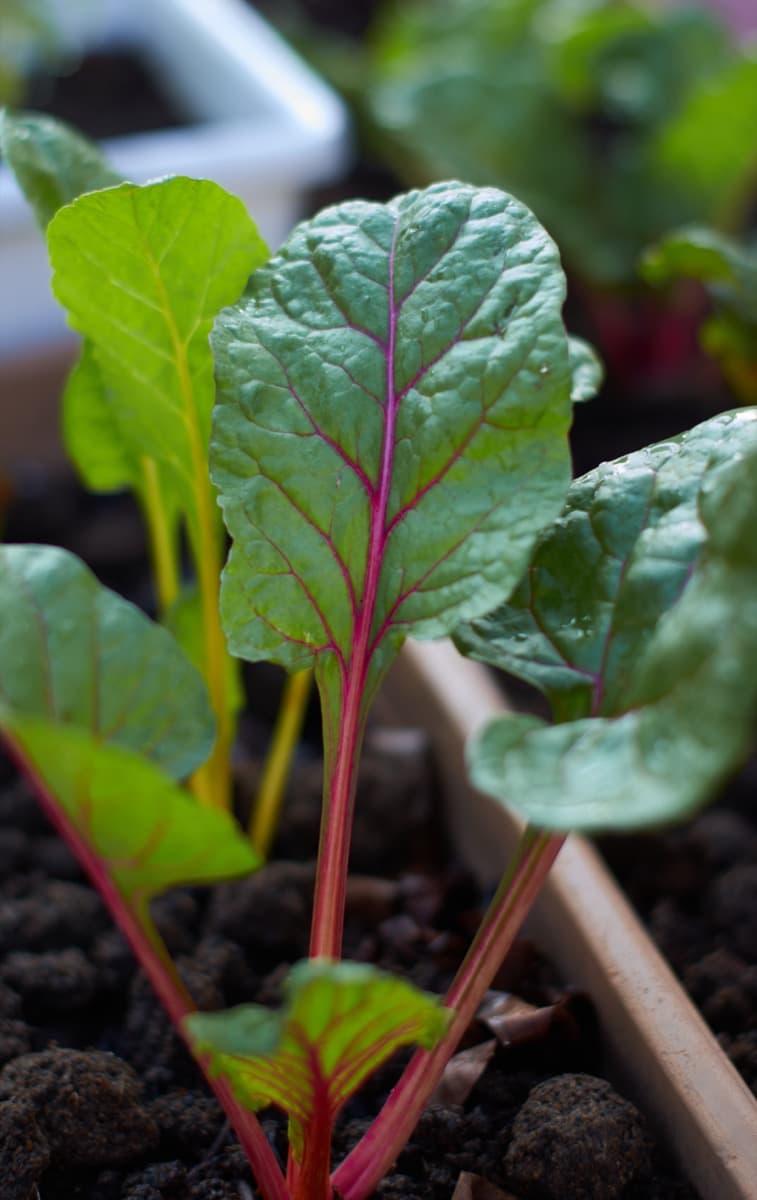
Climate suitable for growing Swiss Chard in containers
Swiss Chard can be grown in both sunny and shady locations. Swiss Chard prefers full sun but will also grow well in partial shade. If you live in an area with very hot summers, it’s best to grow Swiss Chard in a shady spot to prevent the leaves from getting too wilted. To ensure your Swiss Chard grows healthy and strong, pay attention to the plant’s climate requirements. Swiss Chard is a cool season crop that does best in temperatures ranging from 15 to 18°C.
The plant can tolerate some frost, but too much cold weather will cause the leaves to turn yellow and become bitter. If you live in an area with long, hot summers, you can still grow Swiss Chard by planting in the fall or spring when temperatures are cooler. The plants prefer growing in cooler weather and will bolt (go to seed) if exposed to prolonged periods of heat. To keep your Swiss Chard plants producing throughout the season, ensure they have plenty of moisture.
Soil requirement for growing Swiss Chard in containers
Swiss Chard is an easy vegetable to grow in containers, as it doesn’t have too many specific soil requirements. In general, you should look for a potting mix that is light and well-draining, as Chard prefers moist but not wet conditions. If you are unsure about the quality of your potting mix, you can always amend it with some organic matter.
Just be sure to avoid using any fresh manure, as this can burn the roots of your plants. A little bit of fertilizer added to the soil at planting time will also help to ensure that your Swiss Chard has all the nutrients it needs to grow strong.
In case you missed it: Growing Swiss Chard Hydroponically – A Full Guide
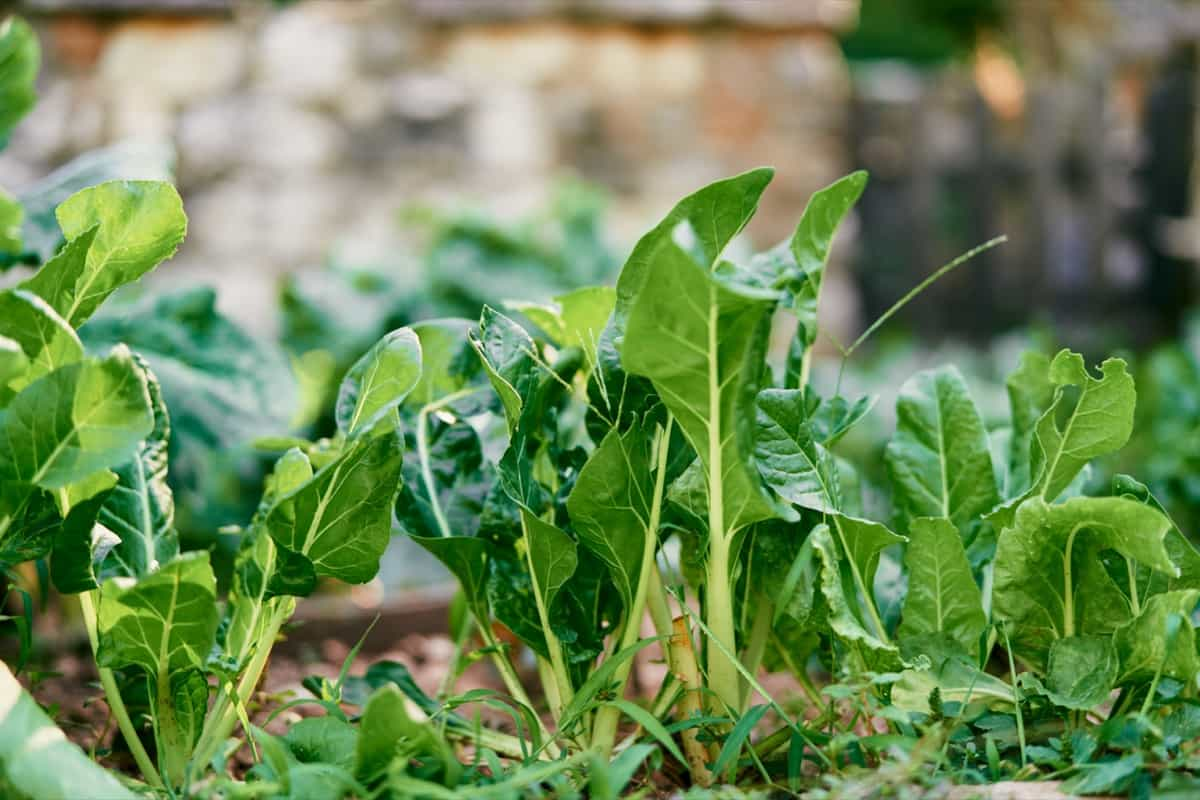
Water requirement for growing Swiss Chard in containers
Swiss Chard is a versatile vegetable grown in various containers. While the size of your container will dictate how much water your Swiss Chard needs, you should water your Swiss Chard once a week to keep the soil moist. If you live in high humidity or heat, you may need to water more frequently. Check the soil before watering to see if it needs additional moisture.
To grow Swiss Chard in containers, you must regularly water your plants. Water them when the soil feels dry to the touch, and ensure to water the base of the plant rather than just the leaves. You may need to water your Swiss Chard more frequently during hot weather.
Container size suitable for growing Swiss Chard
The size of the container you use to grow Swiss Chard will depend on the available space and the number of plants you want to grow. A small pot or container can easily accommodate a single plant, while a larger pot or container will be necessary to grow multiple plants. When choosing a pot or container for your Swiss Chard, ensure it has drainage holes in the bottom. Choose a pot or container that is twice large as the root ball of your Swiss Chard plant.
Propagating Swiss Chard
From seeds
If you’re interested in growing Swiss Chard in containers, one of the best ways to get started is by propagating the plants from seeds. Swiss Chard is a relatively easy plant to grow from seed, and with a little care and attention, you can successfully propagate Swiss Chard in just about any container.
In case you missed it: Growing Swiss Chard, Planting, Care, and Harvesting
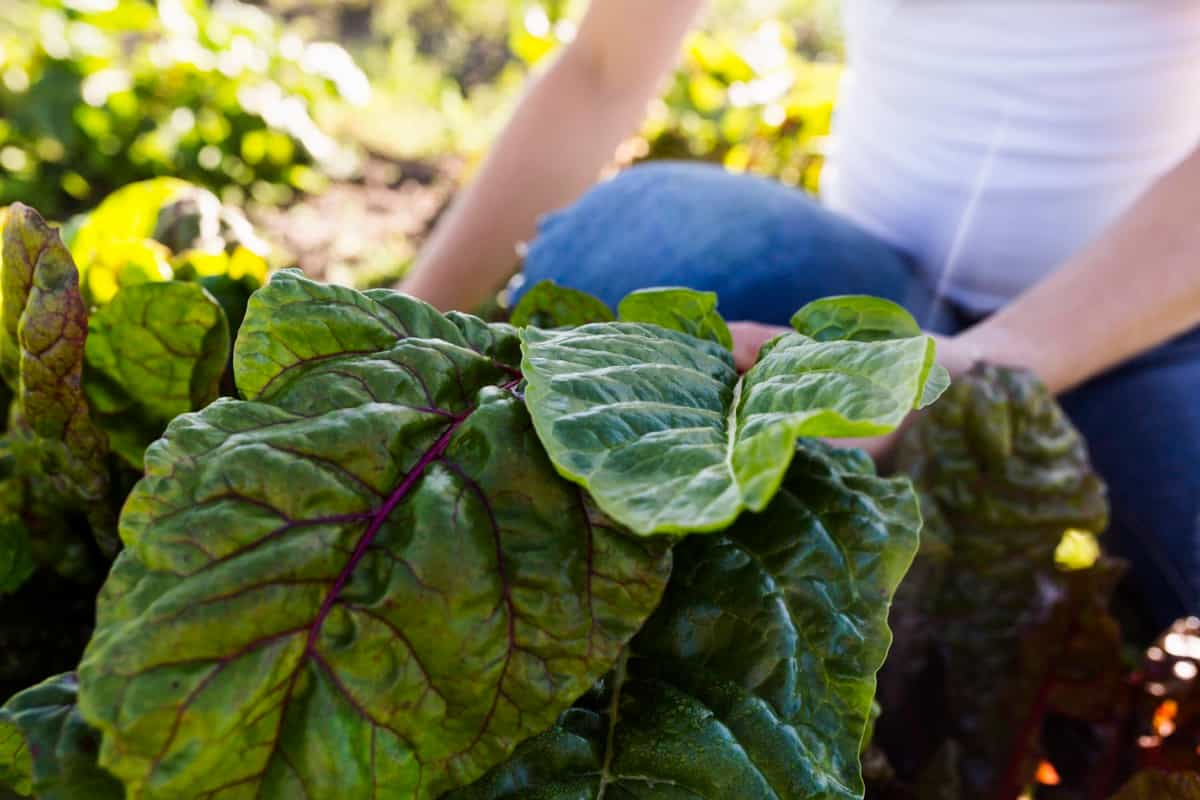
When propagating Swiss Chard from seeds, ensure that the container you’re using has good drainage. Swiss Chard doesn’t like to sit in wet soil, so ensure your container has plenty of drainage holes. You’ll also want to use a quality potting mix that contains organic matter. To sow your Swiss Chard seeds, scatter them on top of the soil in your container.
Then, lightly press them into the soil and cover them with a thin layer of potting mix or sand. Water well and place the container in a warm, sunny spot. Keep the soil moist; you should see little seedlings starting to poke through the soil within a few weeks. Once your seedlings have emerged, thin them out so that there’s only one or two per pot. These seedlings will need to be transplanted into larger pots as they grow.
Swiss Chard plant care
Fertilizer requirement for growing Swiss Chard in containers
One of the best things about growing Swiss Chard is that it doesn’t require a lot of fertilizer. Too much fertilizer can harm the plant. A light application of a well-balanced fertilizer is all that’s needed to keep your plants healthy and productive. Once you’ve got your fertilizer, apply it according to the package directions. You’ll probably only need to fertilize once or twice during the growing season.
In case you missed it: New Year Resolutions for Gardeners: Perfect Gardening Resolutions
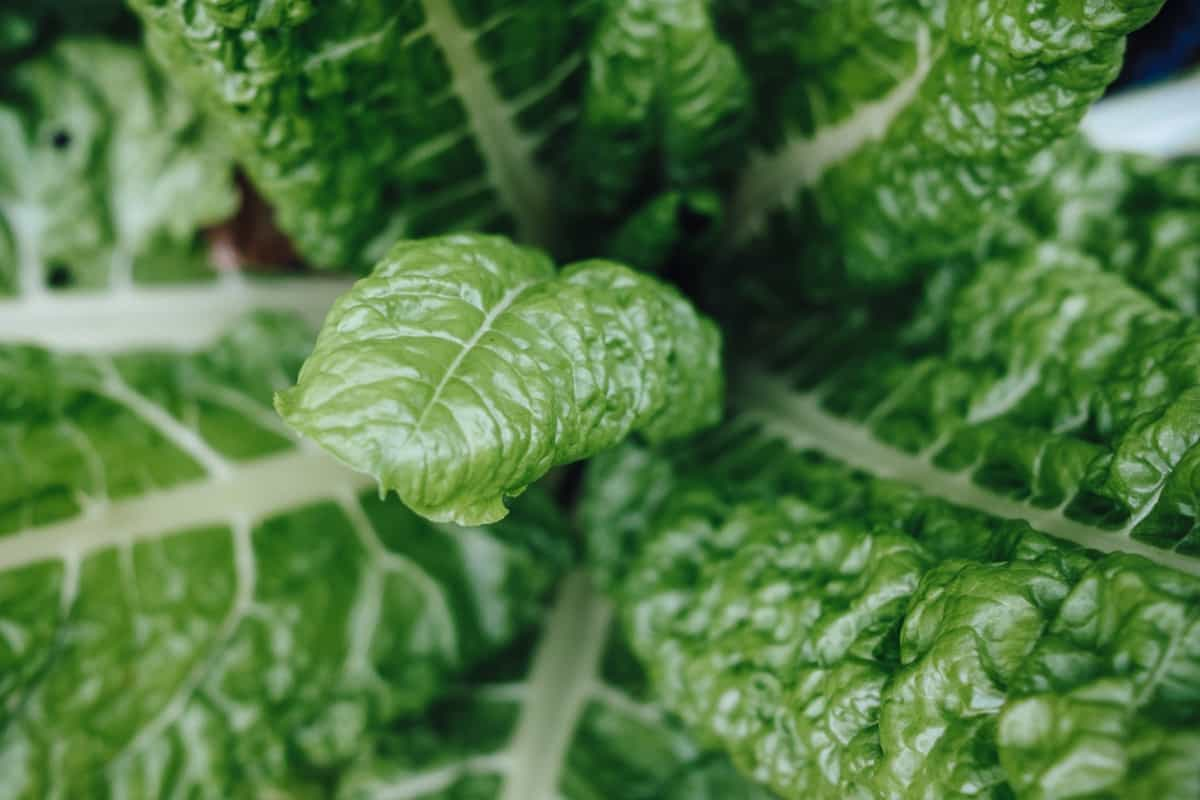
You can use 1/2 cup of fertilizer per 10 square feet of planting area. You can apply the fertilizer directly or mix it into the watering can before watering the plants. It is best to fertilize Swiss Chard every two weeks during the growing season. If you want to use a slow-release fertilizer, you can apply it once per month. Follow the manufacturer’s instructions on how much fertilizer to use. Overfertilizing can damage plants and reduce yields.
Pruning Swiss Chard plant
Pruning Swiss Chard is important in keeping the plant healthy and productive. Cut off any dead or yellow leaves from the plant. This will help the plant to focus its energy on producing new, healthy leaves. Trim back any long, leggy stems.
These stems are not producing as many leaves as they could be, so trimming them back will encourage the plant to produce more leaves. Cut them back about halfway up the stem if you want to harvest the Swiss Chard plants for their leaves. This will allow the plant to put all its energy into producing new leaves, which can be harvested in a few weeks.
Swiss Chard plant care in winter
Although Swiss Chard is a fairly hardy plant, it can suffer from cold damage if the temperature drops too low. If you live in an area with very cold winters, you may need to take extra steps to protect your plants. One way to protect your Swiss Chard plants is to grow them in containers that can be moved indoors if necessary.
In case you missed it: 18 Moisture Loving Plants that Thrive in Wet Soil: Every Gardner Should Know These

If you do not have space to move your containers inside, try covering them with a cloth or tarp to provide some insulation from the cold. In addition to taking care of your plants, you will need to water them less often in winter. Swiss Chard does not need as much water when the temperature is cooler, so check the soil before watering and give the plants enough water to keep the soil moist.
Pests and diseases of Swiss Chard and their control
Swiss Chard is a versatile and easy-to-grow vegetable grown in containers. However, like all plants, it is susceptible to pests. The most common pests of Swiss Chard are aphids, leaf miners, and caterpillars. Aphids are soft-bodied insects that feed on the sap of plants. They can cause stunted growth and distortion of leaves. Leaf miners are small larvae that tunnel through leaves, causing them to turn brown and wither.
Caterpillars defoliate a plant quickly if not controlled. This can be done by keeping your garden clean and free of debris. Monitor your plants regularly and act quickly if you see any. Hand-pick and drop them into soapy water to kill them. It is a cool-weather crop that can be grown in containers. Swiss Chard is slightly bitter and often used in salads or as a cooked vegetable. Downy mildew disease is caused by a fungus and is characterized by yellow spots on the leaves.
The spots eventually turn brown, and the leaves may drop off the plant. To control downy mildew, water early in the day so the leaves have time to dry before nightfall. Fungicides can also be used if needed. Powdery mildew disease is caused by a fungus and is characterized by white powdery spots on the leaves. The spots may eventually turn brown, and the leaves may drop off the plant. Powdery mildew can be controlled by water early in the day, so the leaves have time to dry before nightfall.
Harvesting Swiss Chard
Swiss Chard can be planted in the spring or fall. In mild climates, it can even be planted year-round. Cut the leaves from the stem using a sharp knife to harvest Swiss Chard. You can cut as much or as little as you need; make sure not to damage the stem. If you want to harvest the stems, cut them about 4 inches from the base of the plant. Swiss Chard will regrow quickly so that you can harvest it multiple times throughout the growing season.
In case you missed it: 18 Best Vegetables to Grow in Buckets: Planting to Care for Beginners
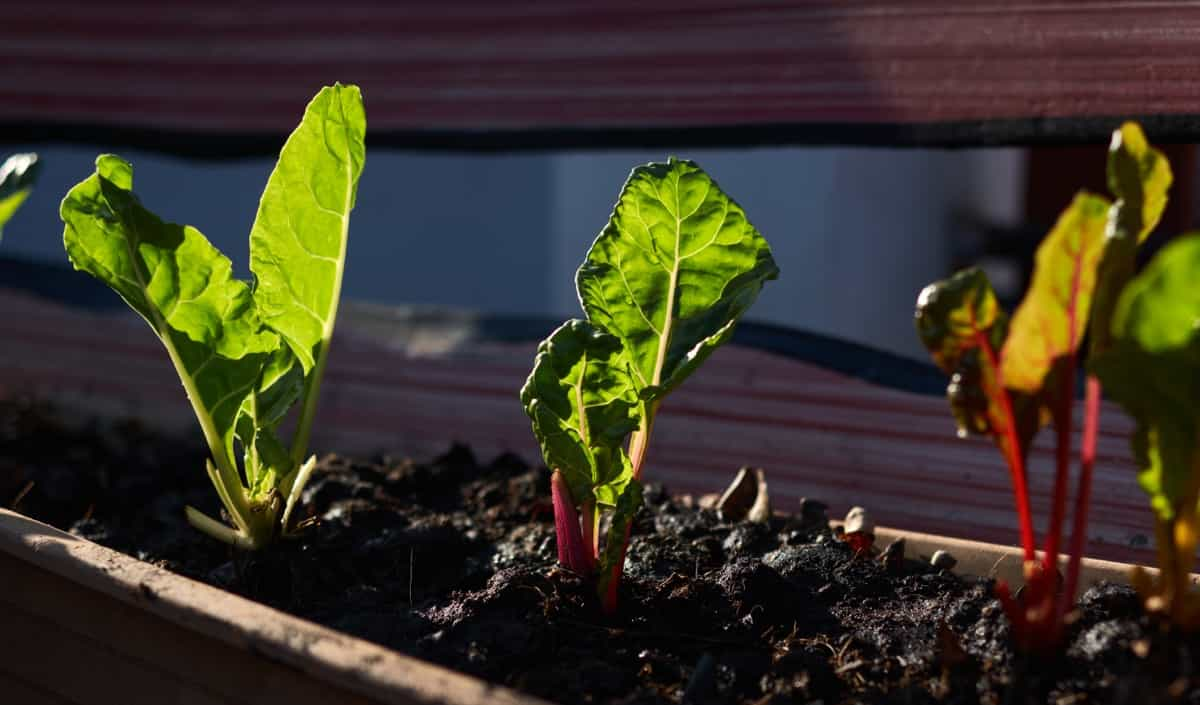
Conclusion
Growing Swiss Chard in containers is an ideal gardening project for those with limited space or looking to get started in the world of container gardening. You can enjoy delicious and nutritious Swiss Chard from your home-grown plants with patience. This delicious leafy green is nutrient-rich and easy to maintain but also looks beautiful, adds color to the garden, and thrives in partial sunlight. Growing Swiss Chard in containers has become increasingly popular among urban gardeners due to its low maintenance requirements and high yield.
- Growing Gold: Essential Techniques for Planting Pineapples
- How to Make Kalanchoe Plant Bushy: Home Remedies and Solutions
- 11 Reasons Why Your Gardenia is Not Blooming: Home Remedies and Solutions
- Eco Elegance: The Guide to Designing a Drought-Tolerant Landscape
- Gardening on a Slope: Strategies for Hillside Landscaping
- Nourish and Flourish: Top Organic Mulches for Thriving House Plants
- Everything You Want to Know about Indian Mogra Flower: Discover Uses and Growing
- Green Thumb Success: Expert Tips for Cultivating Greenhouse Pumpkins All Year Round
- Maximize Growth & Flavor: The Ultimate Guide to Companion Planting in Herb Gardens
- How to Control Rhododendron Problems Naturally: Home Remedies and Organic Ways to Fix Them
- Natural Magic: The Remarkable Benefits of Cinnamon for Plants
- Best Steps to Revive Dying Tulip with Natural and Organic Treatment
- 10 Reasons Why Your Angel Trumpet is Not Blooming: Remedies and Treatment
- How to Fix Periwinkle Leaf and Flower-Related Problems: Natural Remedies and Solutions
- How to Fix Zinnias Leaf and Flower Problems: Discover Natural and Home Remedies
- Organic Steps to Induce Lemon Tree Flowers: A Comprehensive Guide
- Bloom Booster: Crafting the Perfect Homemade Bougainvillea Fertilizer
- Optimizing Growth: A Guide to Applying NPK Fertilizer for Potted Plants
- 10 Best Homemade Fertilizers for Rubber Plant: DIY Recipes and Application Method
- How to Boost Female Pumpkin Flowers: Effective Steps for More Flowers and High Yields
- Transform Your Indoor Garden: Top Benefits of Pink Salt for Houseplants
- 10 Best Homemade Fertilizers for Peacock Plants (Calathea): Easy DIY Guide
- Unlock Blooms: 9 Reasons Why Your Potted Chrysanthemum is Not Blooming
- 8 Reasons Why Your Potted Hibiscus is Not Blooming: Fix it with Simple Solutions
- Unlock Blooms: 9 Key Reasons Your Potted Frangipani Won’t Flower
- 10 Reasons Why Is My Ice Plant Not Blooming: Remedies and Treatment
- 10 Reasons Why My Potted Hydrangea Not Blooming: Treatment and Remedies
- 10 Reasons Why is My Wisteria Not Blooming: Remedies and Treatment
- 10 Reasons Why is My Goldfish Plant Not Blooming: Remedies and Treatment
- Maximize Your Space: Ultimate Guide to Balcony Gardening with Grow Bags
- 10 Reasons Why Your Iris is Not Blooming: Remedies and Treatment
- 10 Reasons Why Your Anthurium Plant is Not Blooming: Treatment and Remedies
- 10 Reasons Why Your Aquaponic Plants Are Not Flowering: Remedies and Treatment
- 10 Reasons Why Your Agapanthus is Not Flowering: Remedies and Treatment
- Ultimate Guide to Brown Turkey Fig: Steps to Growing Brown Turkey Figs
- How to Grow Acai Berry: Propagation, Planting, and Care